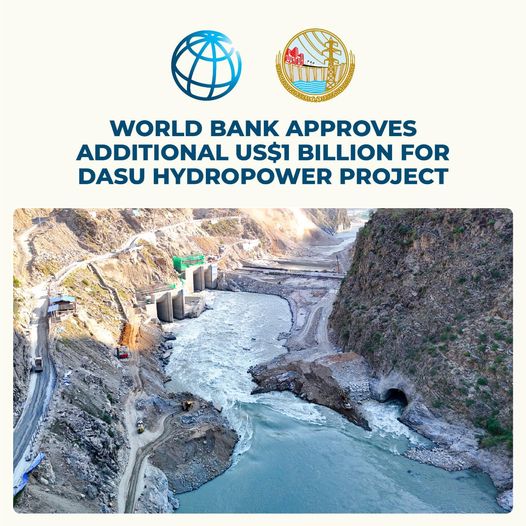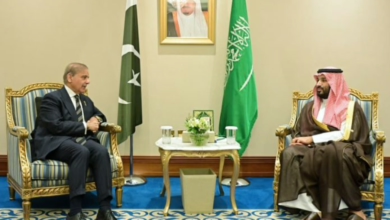World Bank approves additional US$1 billion for Dasu Hydropower Project

Single largest financing facility for a project in Pakistan. World Bank approves additional US$1 billion for Dasu Hydropower Project. In what can be termed a significant development for much-needed financing to generate clean, green and economically affordable hydel electricity in Pakistan, the World Bank has approved additional financing to US$ 1 billion for the Dasu Hydropower Project, constructed by WAPDA on the River Indus. This is the single largest financial facility the World Bank provides for a project in Pakistan. This facility comprises concessional financing through the World Bank arms of IDA and IBRD.
Approval to this effect was accorded by the World Bank in its meeting. This additional financing by the World Bank reflects the trust the Bank reposes in WAPDA’s financial strength and professional expertise for successfully implementing mega projects in the Water and Hydropower sectors.
It is important to note that the World Bank already provides financial support of US$ 588 million and a partial credit guarantee of US$ 460 million to construct the Dasu Hydropower Project.
WAPDA is constructing eight mega projects worth US$ 26 billion to add 9.7 million feet (MAF) to the water storage and double its hydel generation capacity from 9,500 to 20,000 megawatts (MW) during the next five years. WAPDA has devised an innovative financial strategy to construct these projects with less reliance on the national exchequer by exploiting its financial strength. Dasu is one of these under-construction projects.
The 4320 MW-Dasu Hydropower Project is being constructed on the River Indus, upstream of Dasu Town, in the Upper Kohistan District of Khyber Pakhtunkhwa Province. The Project is planned to be completed in two stages, each with a generation capacity of 2160 MW. At present, WAPDA is constructing Stage I of the Project. After the successful diversion of the River Indus last year, construction work is continuing simultaneously on key sites of the Project. Stage I of Dasu Hydropower Project will start electricity generation in 2026. It will contribute 12 billion units per annum to the National Grid. Stage II will also provide another 9 billion units to the system annually.





